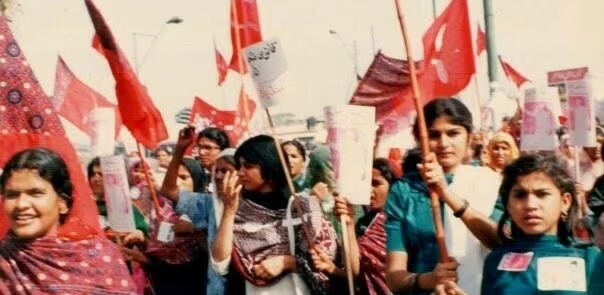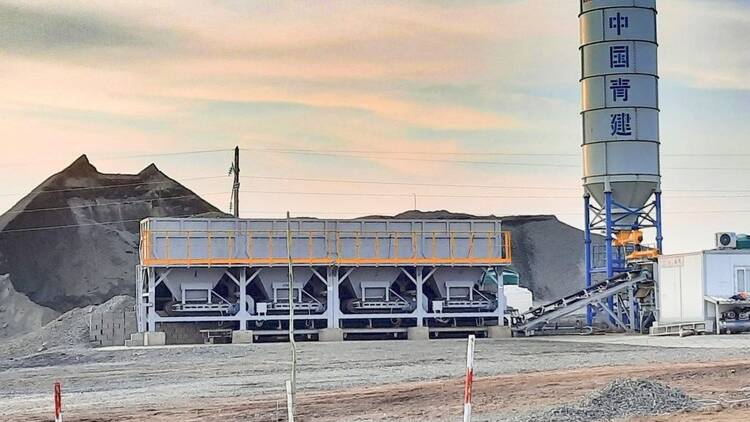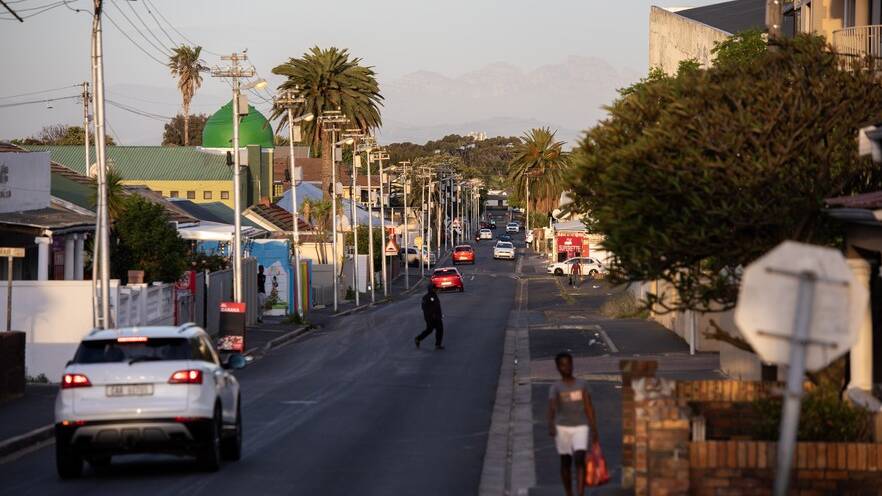Symbolic or Substantive?
Medium | 13.11.2025 15:59
Symbolic or Substantive?
8 min read
·
Just now
The struggle for Women's Rights within the Pakistani Legal Framework
By Muneeb Shahzad
Pakistan’s Constitution guarantees equality and prohibits discrimination based on sex. Over recent years, statutes such as the Protection Against Harassment Act (2010), provincial Domestic Violence Acts, and cybercrime legislation have promised protections. Yet for many women, the promise remains symbolic: violence, harassment, and impunity persist. Examining case law and national data from 2020–2025 — including landmark verdicts like Noor Mukadam and high-profile murders such as Sana Yousaf — this article critically assesses the gap between legal guarantees and lived reality. With over 17,500 cases of violence against women reported in Punjab alone in 2023, and rape cases rising sharply, enforcement remains weak. Judicial interventions have advanced doctrine, particularly in recognising digital evidence and broadening definitions of harassment. However, institutional, cultural, and procedural deficits severely limit impact. The comparison with peer jurisdictions and Pakistan’s obligations under CEDAW shows that while substantive equality is possible, Pakistan is far from universalising it. The article concludes with concrete reforms needed for durable, substantive protection.
From the moment we read the Constitution of Pakistan — articles that assert, in words, the equality of all citizens and ban discrimination based on sex — one expects the law to shield women, not only in principle but in their everyday lives. However, despite progressive statutes and an energetic civil society, entrenched inequality continues. In 2023, Punjab alone recorded 17,527 cases of violence against women, including 6,624 rape cases; districts such as Lahore, Faisalabad, Sheikhupura, and Kasur repeatedly emerge as violence hotspots (Sustainable Social Development Organisation [SSDO], 2024). These figures do not simply indicate more reporting; they indicate deeper vulnerabilities.
Why, despite legal protections, do many women still face violence with impunity? Are laws mere symbols for appearances, or do they deliver substantive justice? This article argues that Pakistan’s legal framework contains both promise and peril: its laws are often well-drafted, its highest courts capable of bold rulings, but enforcement remains inconsistent. Through case studies including Noor Mukadam, workplace harassment verdicts, and the Srinagar of modern influence — Sana Yousaf — this article demonstrates that while some rights have been transformed from symbolic to substantive, most remain aspirational. To move forward, Pakistan must bridge constitutional promise with institutional practice, societal transformation, and political will.
I. Legal and International Foundations
Pakistan’s Constitution, particularly Articles 25 and 34, mandates equality before the law and requires state support for women’s participation in national life. Legislation such as the Protection Against Harassment of Women at the Workplace Act (2010, amended 2022), and provincial Domestic Violence (Prevention & Protection) Acts (Punjab 2016; Sindh 2013; Khyber Pakhtunkhwa 2021; Balochistan 2014) offer statutory protection. The Prevention of Electronic Crimes Act (PECA) addresses digital harms. Pakistan is also bound by CEDAW, which requires state parties to ensure both legal equality and effective protection (UN Women, 2023).
On paper, this legal architecture is robust. In constitutional text, in statute books, and in international commitments, Pakistan appears to have all the tools. The challenge lies in enforcement: legislation must translate into investigations, prosecutions, judgment, deterrence, and societal assurance that the law works, not just exists.
II. Judicial Interventions: Doctrine and Courage
Recent judicial decisions reveal doctrinal advances that are indispensable for substantive equality.
In Noor Mukadam’s case, the Supreme Court’s detailed judgment (June 2025) upheld Zahir Jaffer’s death sentence for murder and life imprisonment for rape. Significantly, the court ruled that digital evidence — CCTV, hard disks, DVRs — can be primary, self-sufficient proof under certain conditions, without eyewitness testimony, employing the “silent witness” theory (Pakistan Today, 2025). The judgment affirms that reliable video evidence, if shown to be authentic and untampered, meets the standards of proof (Dawn, 2025). This marks a shift: digital evidence, once secondary, now helps courts deliver verdicts in cases of severe violence. Similarly, workplace harassment law has seen more expansive interpretations. In 2024–2025, cases such as Muhammad Din v. Province of Punjab, involving Dr Sidra Zafar, shifted the framing of harassment beyond overt sexual advances, emphasising control, gender bias, hostile environment, and the erosion of dignity — not just “sexual intention.” Such jurisprudence helps widen the scope of redress and acknowledges subtler harms often dismissed.
These doctrinal advances are critical. They equip victims with broader legal definitions, allow courts to accept evidence forms once considered weak, and place responsibilities on institutions to treat harassment, violence, and digital abuse as rights violations, not moral lapses.
III. Case Studies: When the Law Delivers, and When It Fails
Get The JT Law Review’s stories in your inbox
Join Medium for free to get updates from this writer.
Noor Mukadam
Noor Mukadam’s murder in 2021 drew national and international attention. Zahir Jaffer was arrested at the scene; digital forensics, CCTV, and DNA evidence played central roles. In 2025, Pakistan’s Supreme Court upheld his death sentence for murder and life imprisonment for rape, while commuting other charges. The judgment declaratively affirmed digital evidence as sufficient without eyewitnesses under proper authentication (Pakistan Today, 2025; Dawn, 2025). This case shows what is possible when public outrage, media scrutiny, and legal resources align.
Muhammad Din / Dr Sidra Zafar Harassment Case
In this case, a physician alleged harassment by her driver, Muhammad Din. The Ombudsman in Punjab dismissed him from service, and both the Lahore High Court and the Supreme Court sustained that decision. Crucially, the courts emphasised that harassment includes “domination and erosion of dignity,” moving away from narrow definitions. While a landmark for workplace environments typically neglected, many such cases never reach courts or result in meaningful sanctions.
Sana Yousaf
In June 2025, 17-year-old influencer Sana Yousaf was murdered in Islamabad, allegedly by a man who had been repeatedly rejected by her. Authorities arrested the suspect swiftly, recovered her phone and weapon, and initiated proper investigations. Media attention was intense. Yet, the case reveals that legal system responsiveness, while timely, is not enough without preventive measures for online safety, restraining orders, protection for visibly public women, and no guarantee yet of systemic reform to protect future victims.
National Scale & Statistics
In 2023, Punjab reported 17,527 cases of violence against women, including 6,624 rape cases — an increase from previous years. Lahore, Faisalabad, Sheikhupura, and Kasur were significant hotspots. In that same year, Lahore had 1,464 cases under PPC Sections 354 and 509, an average of 28 women facing violence daily (SSDO, 2024; Dawn, 2024). Despite high reporting, conviction rates remain extremely low — often in the single digits — as revealed in Punjab and Khyber Pakhtunkhwa. Domestic violence cases, sexual abuse, and child-victim cases typically lack timely legal responses.
IV. Barriers to Substantive Equality
The chasm between legal protections and women’s lived experiences in Pakistan is most painfully visible in the data. In Punjab alone, over 10,000 cases of violence against women were reported in 2023, yet conviction rates remain in the single digits (HRCP, 2024). These figures are not mere statistics — they are silenced lives, each number representing a woman who endured assault, harassment, or degradation without receiving justice. The Global Gender Gap Index (World Economic Forum, 2025) ranks Pakistan among the lowest in the world, a numerical indictment of the failure to translate rights into realities.
The barriers are multidimensional. Police stations often lack trained female officers, leaving complainants to narrate their trauma to unsympathetic or hostile male officers. Forensic laboratories are underfunded and backlogged, meaning evidence crucial to convictions is often delayed or dismissed. Prosecutors, overwhelmed with case backlogs and lacking specialised gender-based violence training, fail to pursue charges effectively. Even when courts intervene with progressive rulings, victims must first navigate a hostile bureaucracy, where bribery, intimidation, and threats remain routine.
Cultural stigma deepens the legal vacuum. Victims are frequently blamed for their own suffering, discouraged from seeking justice for fear of “dishonouring” their families. Rural women, in particular, remain doubly vulnerable: denied awareness of their rights, excluded from urban-centred shelters, and often silenced by extra-legal forums such as jirgas that perpetuate patriarchal control. The tragic case of 17-year-old influencer Sana Yousaf in 2025, who was murdered despite prior warning signs of online harassment, illustrates how systemic failures in prevention — restraining orders, digital safety mechanisms, and early police intervention — can turn digital threats into fatal outcomes.
V. International and Comparative Perspective
Pakistan’s obligations under the Convention on the Elimination of All Forms of Discrimination against Women (CEDAW) demand not just laws but their effective enforcement. Yet UN monitoring bodies have repeatedly flagged Pakistan’s failures to allocate resources, provide shelters, or guarantee accessible remedies for victims (CEDAW Committee, 2023).
Comparisons reveal that other Muslim-majority states have managed to push beyond symbolism. In Bangladesh, the 2010 Domestic Violence Act requires police to file protection orders, and while not perfect, this has improved accountability in several districts. Similarly, Tunisia offers a striking counterpoint: its 2017 anti-violence legislation combined statutory reform with tangible state infrastructure, including shelters, hotlines, and awareness campaigns. These interventions, while facing resistance, nonetheless demonstrated that law backed by political will can shift social practice over time.
By contrast, Pakistan’s reforms remain patchwork. Statutes exist on paper, but survivors find no consistent enforcement pathways. What Bangladesh and Tunisia show is that substantive equality demands more than legal drafting — it requires state investment, institutional infrastructure, and a political consensus that women’s rights are not expendable. Without that, Pakistan risks continuing its cycle of outrage after each high-profile case, followed by inertia once public attention fades.
VI. Recommendations for Reform
The path forward is neither abstract nor utopian; it is concrete, measurable, and urgent. First, Pakistan must close legislative gaps. A comprehensive federal Domestic Violence Act is needed to harmonise provincial disparities, set a national floor of protections, and ensure offences such as repeated domestic abuse are non-bailable. The Prevention of Electronic Crimes Act (PECA) requires reform to strengthen protections against cyberstalking, doxxing, and online blackmail, with fast-track complaint procedures to match the speed of digital abuse.
Second, institutional capacity must be built. A national gender-based violence database, as proposed by the Senate, should track cases from complaint to conviction, making patterns of impunity transparent. Virtual Women Police Stations — already piloted in Punjab — must be expanded nationwide, with female investigators, on-site legal aid, and immediate access to protective orders. Investment in forensic science is critical: the Noor Mukadam case (2021–2025) demonstrated the power of digital forensics in securing convictions, but survivors across Pakistan deserve the same evidentiary support, not just those in high-profile cases.
Third, the judiciary and prosecution services need systematic reform. Gender-sensitivity training for judges, prosecutors, and police officers should be institutionalized, not ad hoc. Fast-track courts for gender-based violence must impose strict timelines to prevent attrition, and performance metrics should prioritise conviction quality over conviction count.
Finally, cultural transformation is indispensable. Public education campaigns on consent, gender equality, and digital safety should be integrated into school curricula. Media houses must adopt codes of ethics to end victim-blaming narratives. Above all, political leaders must stop treating women’s safety as a reactive issue, addressed only after national outrage. Women’s rights must be treated as a governance priority, central to constitutional legitimacy and social progress.
Pakistan’s legal framework for women’s rights contains both strengths and shame. On the strength side are constitutional guarantees, statutes, progressive jurisprudence (as in Noor Mukadam and harassment cases), and emerging recognition of digital evidence as primary proof. On the side of shame are the thousands of cases reported with minimal justice, the low conviction rates, the culture of silence, and the fact that many victims remain powerless before the law.
Law without enforcement is ritual. A promise without protection is cruel. The State must commit, with resources and resolve, to ensure that laws are more than symbols and that justice is not only for the visible. Until then, women will continue to walk in the shadows of vulnerability while law whispers comfort. Pakistan has the legal tools. What must follow now is relentless implementation: consistent judicial courage, police accountability, political will, and societal change. Only then will we move from symbolic protection to substantive justice.









